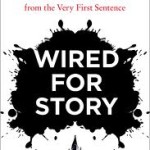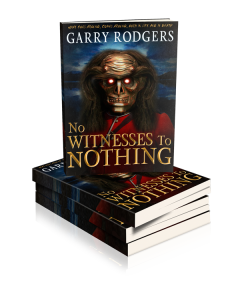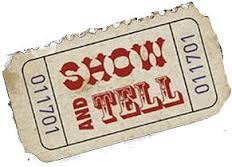You have to read ‘Wired For Story‘ by Lisa Cron.
 It’s the writer’s guide to using brain science to hook readers from the very first sentence. Download it, or go right out and buy it at a brick & mortar place. It’s just that good. Even if you aren’t a writer – as a reader it’ll make you appreciate what a story is.
It’s the writer’s guide to using brain science to hook readers from the very first sentence. Download it, or go right out and buy it at a brick & mortar place. It’s just that good. Even if you aren’t a writer – as a reader it’ll make you appreciate what a story is.
And, as Lisa tells us, we’re all wired for story.
 We’re humans. Story is crucial to our evolution – more so than opposable thumbs. Opposable thumbs lets us hang on; story tells us what to hang on to. Story is what enables us to imagine what might happen and prepare for it. Story is what makes us human.
We’re humans. Story is crucial to our evolution – more so than opposable thumbs. Opposable thumbs lets us hang on; story tells us what to hang on to. Story is what enables us to imagine what might happen and prepare for it. Story is what makes us human.
 Brain science and story. Right brain. Left brain. Common sense.
Brain science and story. Right brain. Left brain. Common sense.
No matter how you cut it, we’re hardwired for story. We need story to make sense of things. We need story to tell us things. We need story so we don’t have to find out things by ourselves.
TV. Facebook. Twitter. Emails.
They’re all story.
Just like letters, and print books, and smoke signals used to be.
 Technology changes, but the human attraction to story doesn’t. That’s because we’re hardwired by our creator to tell and listen to stories.
Technology changes, but the human attraction to story doesn’t. That’s because we’re hardwired by our creator to tell and listen to stories.
We get a dopamine rush from wanting to know what happens next… and that dopamine rush lets us learn. It keeps us up late at night… turning the page. It’s the rush of intoxication. Being captivated by a good read. Meeting our hardwired expectations that the story will tell us something about life that we don’t have to risk learning on our own.
Hey Lisa, I’m gonna quote you without permission…
‘Evolution dictates that the first job of any good story is to completely anesthetize the part of our brain that questions how it is creating such a compelling illusion of reality. After all, a good story doesn’t feel like an illusion. What it feels like is life. Literally. A recent brain-imaging study reported in Psychology Science reveals that the regions of the brain that process the sights, sounds, tastes, and movement of real life are activated when we’re engrossed in a compelling narrative. That’s what accounts for the vivid mental images and the visceral reactions we feel when we can’t stop reading, even though it’s past midnight and we have to be up at dawn. When a story enthralls us, we are inside of it, feeling what the protagonist feels, experiencing it as it were indeed happening to us, and the last thing we’re focussing on is the mechanics of the thing.”






